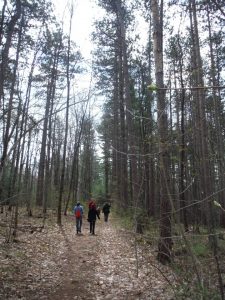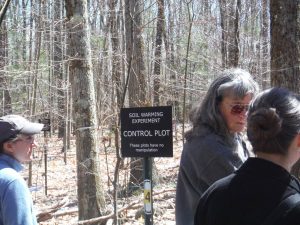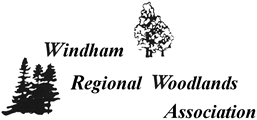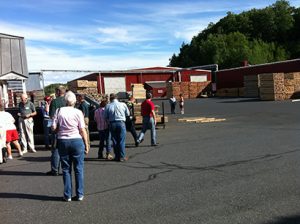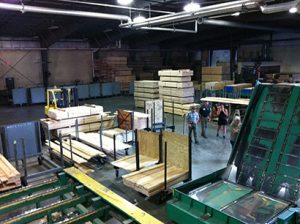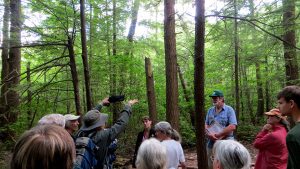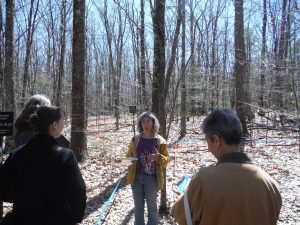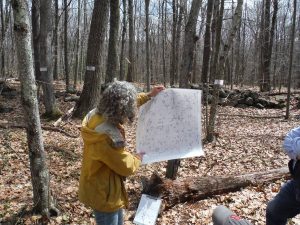Cersosimo Lumber Tour
On Thursday, June 23, 2016, from 5 to 7 p.m., WRWA sponsored a tour of the Cersosimo Lumber Company’s modern double-cut band sawmill in Brattleboro. Former WRWA Trustee John Caveney, the Forestland Manager for Cersosimo, had arranged the tour showing the operation that produces hardwood lumber and White Pine lumber from local forests for lumber markets all over the globe. The program was free and open to the public. The company provided hearing protection and safety glasses for all attendees.
The tour focused on the white pine sawmill. According to an article in the Summer 2016 Woodlot Tips written by Marli Rabinowitz and Margaret MacDonald, “White pine cut in the summer must be processed quickly or the heat and moisture cause it to develop a mold called blue stain. The stain does not affect the quality of the lumber, but in spite of a marketing campaign for ‘wood the color of your Levis,’ consumers won’t buy it, and it must be chipped into pulp. In the winter, the logs can wait longer.”
Black Gum Swamp Tour
On Friday evening, August 7, 2015, Windham County Forester Bill Guenther led a tour of the famous black gum swamps located in the J. Maynard Miller Memorial Town Forest in Vernon. The unique forest ecology there supports an extensive system of swamps that include black gum (Nyssa sylvatica). While the species is not rare 400 miles south, in Vermont it is a survivor from the past when the climate was warmer, and the trees contribute to a primeval quality in the forest. There are some trees there that are believed to be over 400 years old.
Below, Forester Bill Guenther, in blue, looks on as Roger Haydock, in the hat with his hands in the air at left, discusses the special geology of the area.
Visit to Harvard Forest
On Saturday April 23, eight WRWA members and friends viewed the stunning dioramas at the Harvard Forest’s Fisher Museum in Petersham, MA, enjoyed a picnic lunch outside the museum, and visited selected sites in the large forest.
The 3,750-acre Harvard Forest is owned and managed by Harvard University. Founded in 1907 as an ecological research area, forestry education was moved to Petersham in 1914; and the Harvard Forest was made a graduate school focusing on forest biology, conservation, land use history, and the effects of environmental change on forest ecology. The paper records maintained by the Harvard Forest represent the longest continuous history of any major forest in the United States. <
The 23 handmade dioramas in the Fisher Museum show changes in the New England landscape and forests from the early 1700s by depicting the clearing of farmland, conservation practices, and management of the land. A 1936 booklet describes the construction of the models, which represent the landscape in detail. For example, the people are carefully made to scale, and the trees are made of strands of copper wire to form the trunks, boughs, and tiny branches.
After viewing the dioramas, Site and Research Manager Audrey Barker Plotkin led everyone on a short hike to a site studying forest succession and how different species respond to the same conditions.Along the way she described the foci of other research study sites: forest regeneration since the 1938 hurricane, forest biomass development over time, mycorrhizal association between pines and hardwoods, regeneration of native species after a clear-cut of white pine, and regeneration in protected and unprotected areas from browsing by deer and moose, to name a few./p>
You can read more about this special trip in a joint write-up of the event by Margaret MacDonald and Bob DeSiervo in the Spring 2016 Woodlot Tips. More information about the forest is also available at http://harvardforest.fas.harvard.edu/.
